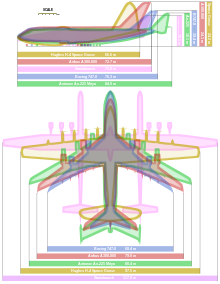This story begins in 1942 when the War Department needed to transport men and material to Britain to aid in the war effort. The original design for this massive plane was created by Henry J. Kaiser, who teamed with Howard Hughes. A contract was given to the Hughes-Kaiser partnership, and the plane project was designated HK-1, after Hughes and Kaiser. There were all sorts of designs added and changed, and because of the mammoth size the plane's design ended up calling for, and because of the shortage of metal, the HK-1 design ended up calling for the plane to be mostly made of wood. As the time crept on, Kaiser grew most frustrated by the lack of essential metals (such as aluminum) and Hughes' insistence that everything be absolutely perfect. Kaiser soon left the project, but Hughes continued without him, now calling it the H-4 Hercules. The H-4 was to be a water-based plane, so it somehow had to get into the water. A massive hangar was built around the H-4's construction, which included a ramp into the water. (Another note, this massive building became the US's first climate-controlled building.)
The project went on so long and was so massive that in 1947, Hughes was called to testify in front of the Senate for the usage of government funds. While on a break from the hearings, Hughes returned to California for some tests of the Hercules. The press turned up, and some were even allowed on board while the Hercules taxied through the harbor. With Hughes himself at the controls, and the pressure of a Senate committee in his mind, Hughes pushed the Hercules to takeoff, remaining approximately 70 feet above the water, and flying at 135 mph while remaining airborn for a mile. With the successful flight completed, Hughes's detractors silenced, and his overuse of government funds hearings ended. The Hercules was not needed by 1947, since the war ended two years earlier.
 |
| Hercules in flight, 1947. |
The Hercules remained flight-ready in a hangar with 300 employees watching over it until 1962 when the staff was downgraded to 50. After Hughes died in 1976, all remaining employees were let go. After a few moves, the Hercules is now on display at the Evergreen Aviation Museum in McMinnville, Oregon.
The specifications of the Hercules are insanely massive:
- Length - 218 ft. 8 in.
- Wingspan - 319 ft. 11 in.
- Height - 79 ft. 4 in.
- Loaded weight - 400,000 lbs.
- Each wing featured 4 engines, and each engine had 4 blades, with the propellor diameter 17 ft. 2 in.
 |
| Gold - H-4 Hercules Green - Antonov An-225 Pink - Airbus A380-800 Blue - Boeing 747 |
One other note about the Hercules. The press dubbed the plane the "Spruce Goose" and the "Flying Lumberyard". Even though the plan had large amounts of wood used in its construction, it wasn't made of spruce. It was actually a laminated birch.

No comments:
Post a Comment